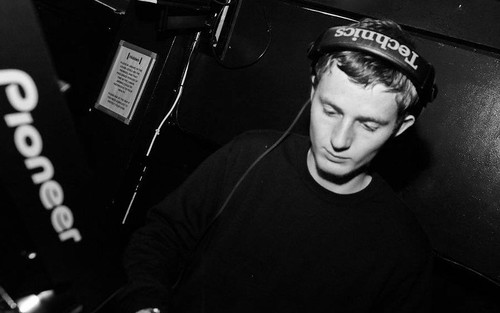Face A/B // Beatrice Dillon

Photo by Anne Tetzlaff
Beatrice Dillon’s Face A/B continues her project of carrying out musical experimentation through the medium of techno, which she describes as ‘the most interesting music now’. Classically trained, and previously having released work with the composer Rupert Clervaux titled Studies I-XVII For Samplers And Percussion, this is not the sterile or academic music one might expect. 'Face A' begins with a bass line that stutters the EP into motion, belying the typical role of such low frequencies as providing a firm ground for the rest of the musical movement. Even the kick seems uncertain of itself, hesitant of an easy break into a four-to-the-floor pattern.
However, such initial tentativeness is part of the play throughout the EP between freedom and control, improvisation and automation. As soon as the kick drum and distorted bass fall into a steady, recognisable pattern we hear the atonal squealings of an improvised saxophone, as if a Free Jazz era Ornette Coleman were trapped inside the snap-to-grid layout of a DAW. The jazz influence is refreshing, particularly against the current trend for hyper-produced, darkly mechanical techno. As a recent Facebook status by Levon Vincent complained, ‘can a guy get a 7th chord once and again?’. The first track bubbles and foams into moments of what seems like improvisatory madness, but as it pares itself down to the essential elements by the end, you begin to realise there was always method in it.
The second track is a variation on the themes of the first - as denoted by the title, 'Face B' - which sees its elements succumbing to more control on the part of the producer. Beginning with stable, metronomic clicks and gentle syncopated dub chord stabs, the saxophone returns, though rather than showcasing a desperate attempt for freedom over the necessity of the rhythm, it seems more to seep into the track, this time heavily processed by Dillon.
The final track 'Sonnier (A Walk in the Light)' dispenses with the elements present in the first two, but nevertheless maintains the same danceable weirdness. At odds with its title, this piece presents a rather murky soundscape, with a slow, swung drum pattern carrying the track along, and an almost sonar-like bleep which adds to the submarine atmosphere. Again, however, Dillon does not allow such murkiness to become mess, and within the timbral strangeness and detuned melodic fragments there is finely-tuned rhythmic control. As with the rest of the EP, moments of caprice which make Dillon’s music so intriguingly progressive are tempered by an exercise of control which is not an exertion of force, but the mark of a discerning restraint which leaves no room for self-indulgence.
- Published
- Sep 26, 2015
- Credits
- Words by Lawrence_Uziell
